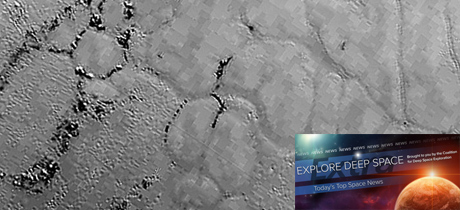In Today’s Deep Space Extra… James Webb Space Telescope now scheduled to launch on December 25 due to weather. Northrop Grumman-designed satellite solar panel for space-based solar power experiment performs successfully in lab tests.
Space Science
JWST is ready for launch, but the weather not so much
Coalition Member in the News – Northrop Grumman
Spacepolicyonline.com (12/21): Anticipated for Christmas Eve, the planned launch of the James Webb Space Telescope (JWST) has shifted to Christmas Day, no earlier than 7:20 a.m., EST, due to predicted unfavorable weather. More weather assessments are anticipated. NASA TV plans to provide live coverage of the liftoff from French Guiana atop a European Space Agency (ESA) furnished Ariane 5 rocket starting at 6 a.m. EST.
Science and music collide with the James Webb Space Telescope
Space.com (12/22): Working on the Webb telescope, team members found themselves connecting over not just the powerful observatory, but also a shared love of music.
The result is a band called “Outta Scope.” The band, led by Lee Feinberg, a keyboardist who also happens to be the Optical Telescope Element manager for Webb at NASA’s Goddard Space Flight Center in Maryland, is made up of Webb scientists and other NASA team members. The band has been together for about 20 years.
Now we know why Pluto has these strange features on its surface
Universe Today (12/21): Spotted by NASA’s New Horizons mission spacecraft as it flew by distant Pluto in July 2015, the Tombaugh Region on Pluto’s surface has puzzled scientists because of its fractured features that are believed to have formed not long ago. A new study suggests the ice polygons were formed by the sublimation of nitrogen ice, meaning Pluto is geologically active. The findings were published in the journal Nature.
MIT scientists say life may have been detected on Venus after all
Futurism (12/21): An MIT-led research effort has come up with a proposition that could support the possibility of life at Venus despite an atmosphere filled with sulfuric acid and a high temperature environment. Perhaps the toxicity of the sulfuric acid has been neutralized by ammonia that could possibly explain the detected presence of phosphine gas in the atmosphere. On Earth, phosphine is created when organic matter breaks down. The premise is explained in research published in the Proceedings of the National Academy of Sciences.
The sensational tail of comet Leonard/geomagnetic storm watch
Spaceweather.com (12/22): Comet Leonard, visible under the right conditions near Venus after sunset, burst from its core on Monday, making it much brighter as it nears the sun. Also, a solar flare on Monday could glance the Earth’s magnetic field on Thursday, creating auroral displays.
Other News
AFRL and Northrop Grumman test key hardware for space-based solar power experiment
Coalition Member in the News – Northrop Grumman
SpaceNews.com (12/21): Northrop Grumman has designed a satellite solar panel as part of a $100 million U.S. Air Force Research Laboratory funded experiment for the collection of solar energy that could be transmitted back to Earth. The initiative has cleared laboratory evaluations and is expected to launch to space for a trial in 2025.

